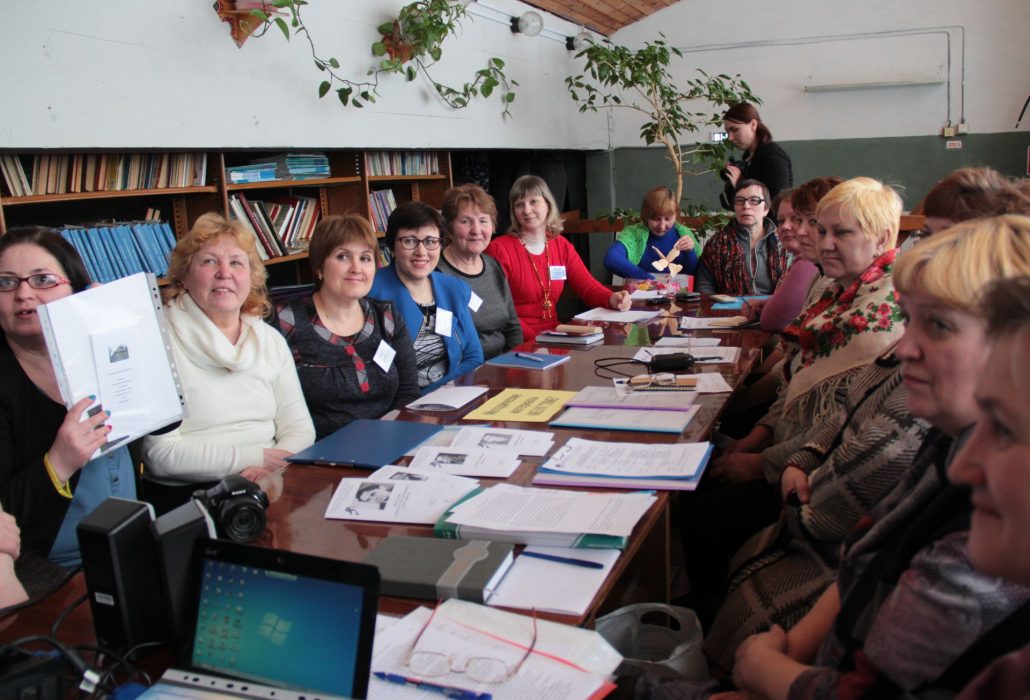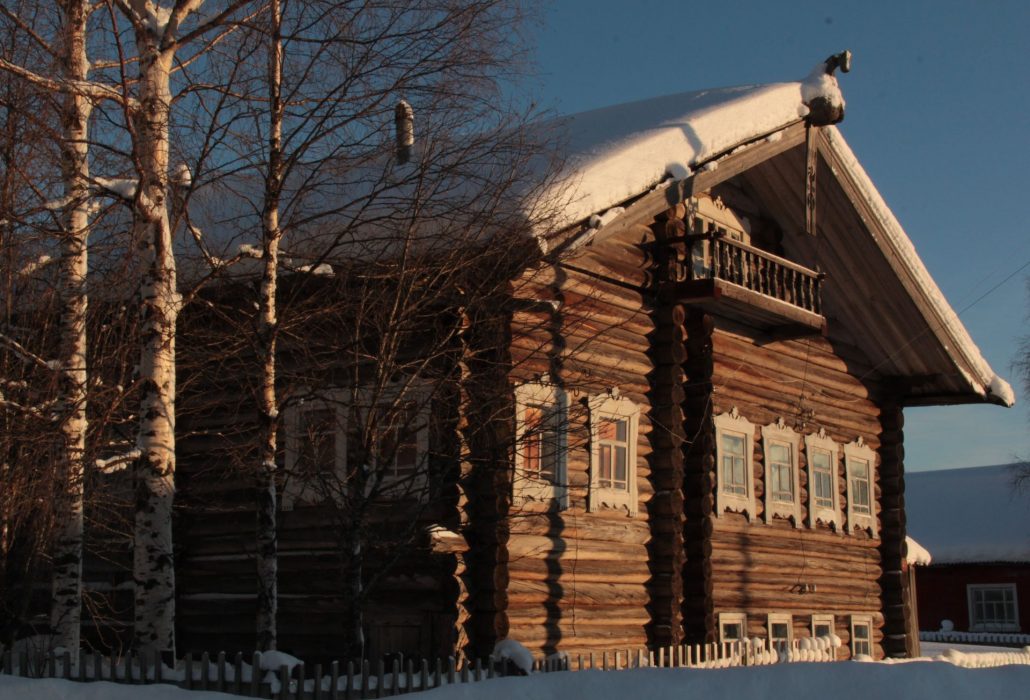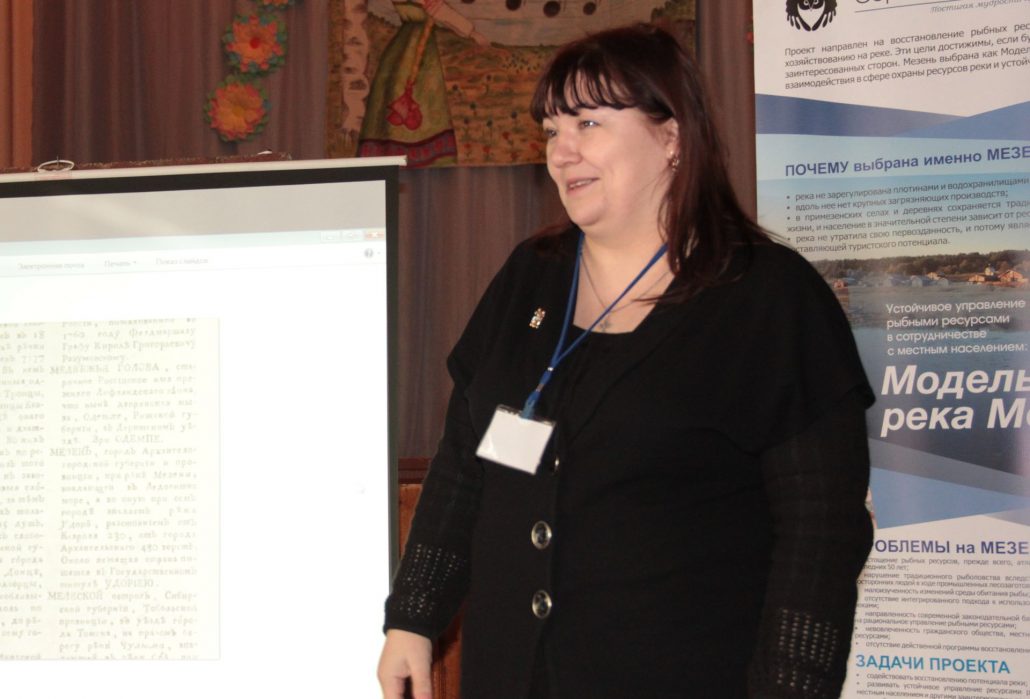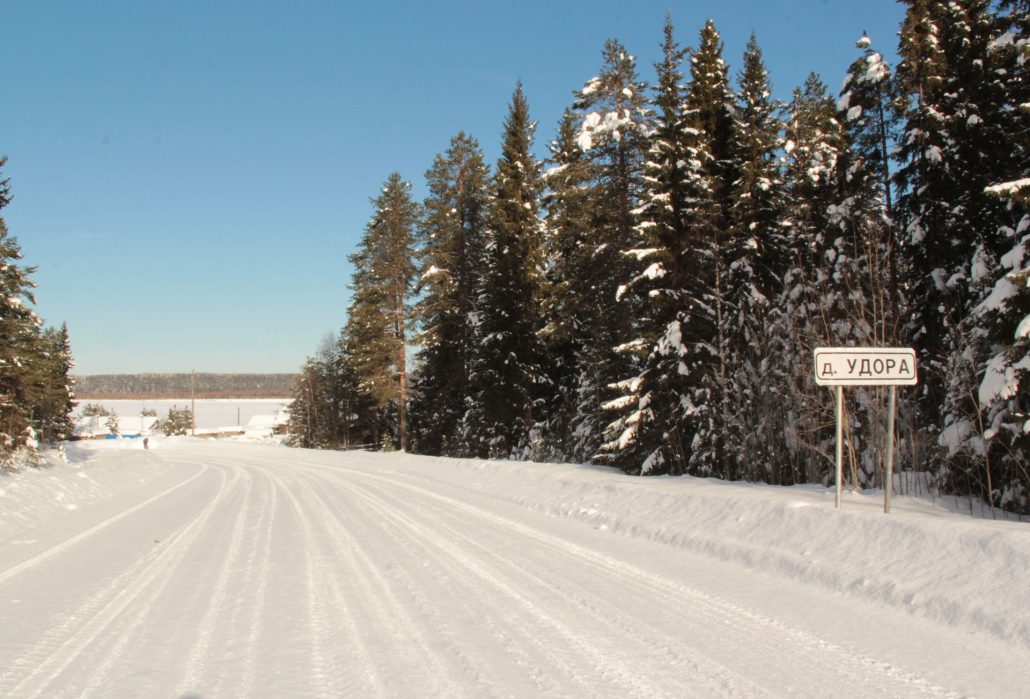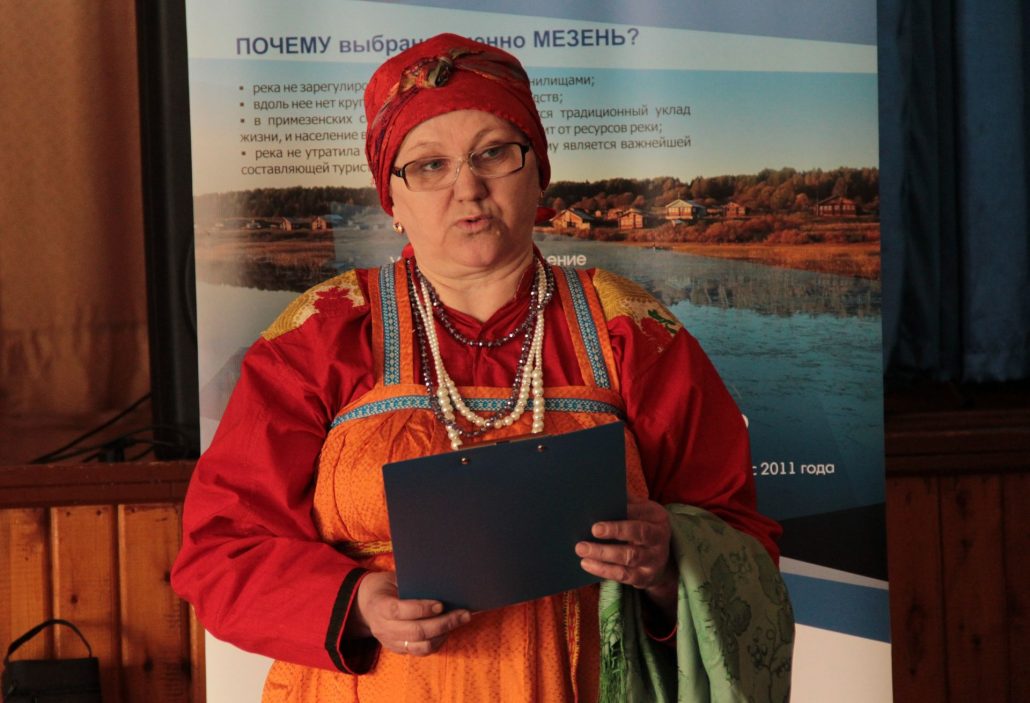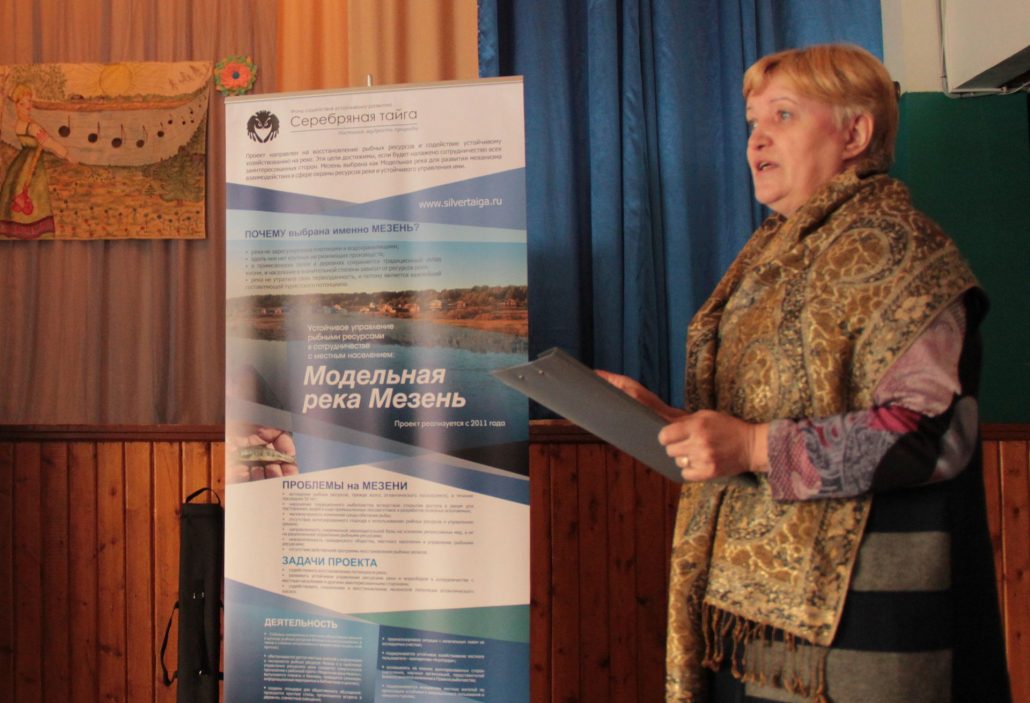LIBRARY BRIDGE LESHUKONYE-UDORA
On 1st March 2018, during the working trip to Leshukonye district, Arkhangelsk region, the Silver Taiga Foundation for Sustainable Development took part in the round table meeting of librarians History of Economic and Cultural Contacts of the Mezen Districts of Arkhangelsk Region and Komi through the Prizm of Ecology held in Vozhgora, Leshukonye district, Arkhangelsk region. Safekeepers of the cultural heritage of the two neighbouring districts – Udora Centralized Library System and Leshukonye Intersettlement Library – met in the old village and discussed prospects for the library services development. Librarians from Leshukonskoye, Vozhgora, Rodoma, Ust-Kyma and Yuroma represented Arkhangelsk region, and their colleagues from Koslan, Chuprovo, Vazhgort, Ertom and Usogorsk participated on behalf of the Komi Republic.
The event was held under the umbrella of the Silver Taiga’s project Model River Mezen aimed at restoration of fishery resources and sustainable river management promotion.
“Some people get surprised that we work with libraries, schools and recreational centers under the environmental project. But to manage the resources efficiently and to get positive results from any project, information exchange is of utmost importance,” Valentina Semyashkina, Silver Taiga Foundation deputy director and local communities project manager, highlighted in her conversation with the participants.
Leshukonye district was chosen as a venue for the librarians’ meeting not only because of its location in the Mezen basin. It is a unique area known to the whole world by its spinning wheels decorated with the Mezen design, peculiar roof accolades, gingerbreads, orthodox memorial crosses. The area also differs by its buildings. For instance, the house of V. Klokotov in Zaoxerye was recognized the best architectural structure of the district and was moved to the Mezen part of the Malye Karely museum in 2004. Leshukonye is famous for its songs both in Russia and abroad. Folk song lovers know well the Leshukonye amateur chorus, Vozhgora folk chorus, Keba folk chorus, Leshukonye children folk chorus and Rodina folk chorus. But the area’s key wealth is its people, and that was the main idea throughout the round table meeting.
It was far from being the first meeting of librarians of the adjacent areas of Arkhangelsk region and Komi. The long-standing cooperation is preconditioned by the commonness of history, culture and economics of the two neighbouring districts that once had been a single entity. Researchers from libraries shared new facts proving long-established connections between the two northern peoples at the round table meeting.
As Svetlana Ivanova, head of the business data department of Leshukonye Intersettlement Library, said, our peoples are related by common ancestors – Zavolochye Chud who once inhabited the area in the basin of the Mezen and the Vashka rivers. Those old tribes left their imprint on the names of settlements and water bodies in Arkhangelsk region and the Komi Republic. The Mezen dialect has many words from the Komi language. For many centuries Russians and Komi lived together on that land, and it was just in the 17th century when modern borders between the Russian and Komi areas were established.
“Russians always contacted with the Komi people. In census books we sometimes find proofs of it, for example, an adscript came from Udora district, or a widow married a man in Udora in 1752. We are left here to wonder how and when a Russian woman and a Komi peasant could meet. Maybe they encountered at a fair? Or met each other along the Pechora tract?” Svetlana wondered in astonishment.
Svetlana’s suggestions about life-changing meetings at fairs were later continued by Olga Antsiforova, head of Vazhgort branch of the Udora Centralized Library System. She said that after the mid of the 19th century Vazhgort in Udora used to hold an Epiphany fair with merchants and peasants from Ustug, Arkhangelsk, Solvychegodsk, Krasnoborsk and Mezen areas coming there to trade their produce and fish. According to Olga, for Komi peasants the fair was a place to meet the Russian language and culture and contributed to improvement of amicable connections between the neighbouring peoples. It was owing to the Epiphany fair that Komi residents learnt and started using bright spinning wheels with the Mezen pattern manufactured in Palashchelye, painted wooden spoons from Pokshinga, decorated coffers and boxes and other products of local crafts. By the way, over the last two years volunteers from Syktyvkar have come to renovate the sunken stalls of the Epiphany fair. The village residents hope that the famous Epiphany fair will be reconstructed soon. The first attempt to replicate the fair was as long ago as at the beginning of the 1970s.
Close connections between the two regions were also preconditioned by the forestry sector development. The first company that started large-scale wood cutting in Udora was managed by the 1st guild merchant from St. Petersburg born in Arkhangelsk Nikolay Rusanov. In 1870, he built a port and a steam-driven sawmill in the estuary of the Mezen and equipped ships for wood transportation in Komi. Wood from Udora continued to be shipped in the Soviet epoch as well. You can still find a workers’ settlement called Udora in Leshukonye district, that’s where wood rafting workers used to live. At the moment, there is only one resident in the settlement, and it is excluded from the list of residential areas. However, there is still a road sign with the name Udora on the way to the village of Ushchelye.
There were a lot of stories about how Leshukonye fishermen had been going to fish to Komi, in particular, to Yamozero lake, to Kosmy lakes. Representatives of Leshukonye shared their memories about the Soviet period, when they went to Komi to buy household and construction materials, and gave examples of their senior relatives who looked for brides at discos in rural recreational centers in Komi. As Zhanna Korovina, head of Chuprovo rural branch of the Udora Centralized Library System, mentioned in her report, since old times Komi girls were married by Leshukonye guys.
The report of Irina Rudnaya, head of customer service department of the Leshukonye Intersettlement Library, who spoke about the Pomor encyclopedia, was also very informative. It is a unique edition that has been under preparation for over 20 years. The scope of information of the Pomor encyclopedia consisting of five volumes makes it stand between the Great Soviet Encyclopedia and British Encyclopedia. For Pomor regional ethnographers, it is an edition of a high value. Many of the encyclopedia articles reflect long-established contacts of Leshukonye and Komi. As Irina Rudnaya said, first volumes of the encyclopedia are being digitalized now.
The meeting was concluded by librarians’ sharing of their methodical experience and plans for further cooperation.

